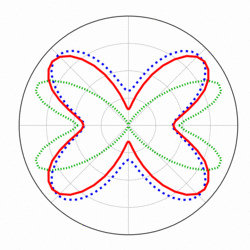Strong-field multiphoton processes in polyatomic molecules
|
Strong-field electronic dynamics is a key ingredient in attosecond science. Most of theoretical studies of strong-field processes, however, are limited to the single active electron model, usually considering the highest-occupied molecular orbital (HOMO) only. For accurate strong-field electronic dynamics calculations, self-interaction-free time-dependent density-functional theory (TDDFT) is employed taking into account the detailed electronic structure and multielectron responses [J. Chem. Phys. 123, 062207 (2005)]. By means of the new developed time-dependent Voronoi-cell finite difference (TDVFD) method on multicenter molecular grids, detailed TDDFT studies are performed for multiphoton ionization (MPI), photoelectron angular distribution (PAD), and high-order harmonic generation (HHG) of several polyatomic molecules in intense linearly-polarized and ultrashort lasers fields with arbitrary field–molecule orientation. The TDDFT results demonstrate the importance of multielectron effects on the strong-field multiphoton processes, such as electron correlation and multiple orbital contributions. For CO2, the TDDFT results [1] show the maximum peak at 40 degree for the first time in good agreement with the recent experimental data regarding the orientation dependence of MPI, whereas significant discrepancy exists between the experimental data and MO-ADK that is one of widely used single active electron models. Also PAD of CO2 reveals the delicate relation between the orientation dependence and the molecular orbital symmetry [1]. For H2O, the TDDFT results provide the first prediction that the contribution from the inner orbital below HOMO (HOMO-1) becomes dominant in the overall patten of the orientation dependence of MPI [2]. This feature suggests a new way to selectively probe individual molecular orbitals in strong-field processes. The presented method can be a promising tool to investigate multielectron effects on attosecond electronic dynamics in polyatomic molecules. |
|
Related Publications
- Sang-Kil Son and Shih-I Chu, Multielectron effects on the orientation dependence and photoelectron angular distribution of multiphoton ionization of CO2 in strong laser fields, Phys. Rev. A 80, 011403(R) (2009)
![[bib]](/sangkil/biblio/img/bibtex.gif) [BibTeX]
[BibTeX]![[pdf]](/sangkil/biblio/img/pdf.gif) [pdf]
[pdf]![[abstract]](/sangkil/biblio/img/abstract.gif) [abstract]
[abstract]![[link]](/sangkil/biblio/img/link.gif) doi:10.1103/PhysRevA.80.011403
doi:10.1103/PhysRevA.80.011403
- Sang-Kil Son and Shih-I Chu, Theoretical study of orientation-dependent multiphoton ionization of polyatomic molecules in intense ultrashort laser fields: A new time-dependent Voronoi-cell finite difference method, Chem. Phys. 366, 91–102 (2009)
![[bib]](/sangkil/biblio/img/bibtex.gif) [BibTeX]
[BibTeX]![[pdf]](/sangkil/biblio/img/pdf.gif) [pdf]
[pdf]![[abstract]](/sangkil/biblio/img/abstract.gif) [abstract]
[abstract]![[link]](/sangkil/biblio/img/link.gif) doi:10.1016/j.chemphys.2009.09.006
doi:10.1016/j.chemphys.2009.09.006
- Sang-Kil Son and Shih-I Chu, Multielectron Effects on Strong-field Multiphoton Ionization of Polyatomic Molecules in Kansas Physical Chemistry Symposium (University of Kansas, Lawrence, Kansas, United States, November 7, 2009) [oral presentation]
![[bib]](/sangkil/biblio/img/bibtex.gif) [BibTeX]
[BibTeX]![[slide]](/sangkil/biblio/img/slide.gif) [slide: 3Mb]
[slide: 3Mb]![[abstract]](/sangkil/biblio/img/abstract.gif) [abstract]
[abstract]
- Sang-Kil Son, Theoretical study of strong-field multiphoton ionization of polyatomic molecules: a new time-dependent Voronoi-cell finite difference method in CFEL Seminar (CFEL, DESY, Hamburg, Germany, July 23, 2010) [oral presentation]
![[bib]](/sangkil/biblio/img/bibtex.gif) [BibTeX]
[BibTeX]![[pdf]](/sangkil/biblio/img/pdf.gif) [pdf]
[pdf]![[slide]](/sangkil/biblio/img/slide.gif) [slide: 6Mb]
[slide: 6Mb]![[abstract]](/sangkil/biblio/img/abstract.gif) [abstract]
[abstract]![[link]](/sangkil/biblio/img/link.gif) [link]
[link]
